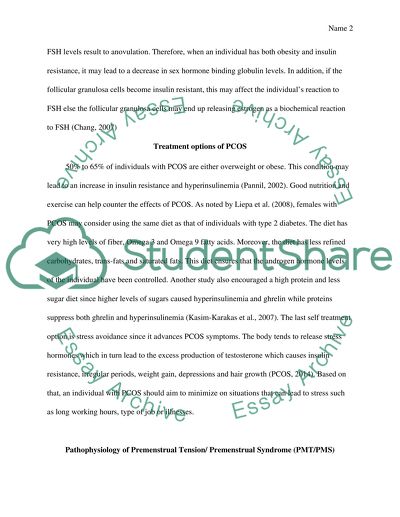Cite this document
(“Polycystic Ovary Syndrome (PCOS): sugar, obesity, weight loss and Essay - 1”, n.d.)
Polycystic Ovary Syndrome (PCOS): sugar, obesity, weight loss and Essay - 1. Retrieved from https://studentshare.org/miscellaneous/1634144-polycystic-ovary-syndrome-pcos-sugar-obesity-weight-loss-and-exercise-pcos-and-pmt-and-stress-and-illness-stress-and-long-working-hours
Polycystic Ovary Syndrome (PCOS): sugar, obesity, weight loss and Essay - 1. Retrieved from https://studentshare.org/miscellaneous/1634144-polycystic-ovary-syndrome-pcos-sugar-obesity-weight-loss-and-exercise-pcos-and-pmt-and-stress-and-illness-stress-and-long-working-hours
(Polycystic Ovary Syndrome (PCOS): Sugar, Obesity, Weight Loss and Essay - 1)
Polycystic Ovary Syndrome (PCOS): Sugar, Obesity, Weight Loss and Essay - 1. https://studentshare.org/miscellaneous/1634144-polycystic-ovary-syndrome-pcos-sugar-obesity-weight-loss-and-exercise-pcos-and-pmt-and-stress-and-illness-stress-and-long-working-hours.
Polycystic Ovary Syndrome (PCOS): Sugar, Obesity, Weight Loss and Essay - 1. https://studentshare.org/miscellaneous/1634144-polycystic-ovary-syndrome-pcos-sugar-obesity-weight-loss-and-exercise-pcos-and-pmt-and-stress-and-illness-stress-and-long-working-hours.
“Polycystic Ovary Syndrome (PCOS): Sugar, Obesity, Weight Loss and Essay - 1”, n.d. https://studentshare.org/miscellaneous/1634144-polycystic-ovary-syndrome-pcos-sugar-obesity-weight-loss-and-exercise-pcos-and-pmt-and-stress-and-illness-stress-and-long-working-hours.


